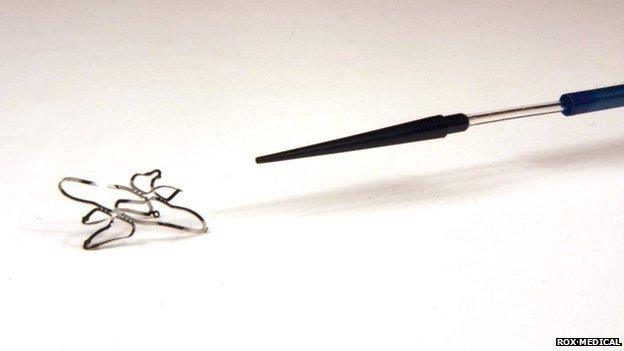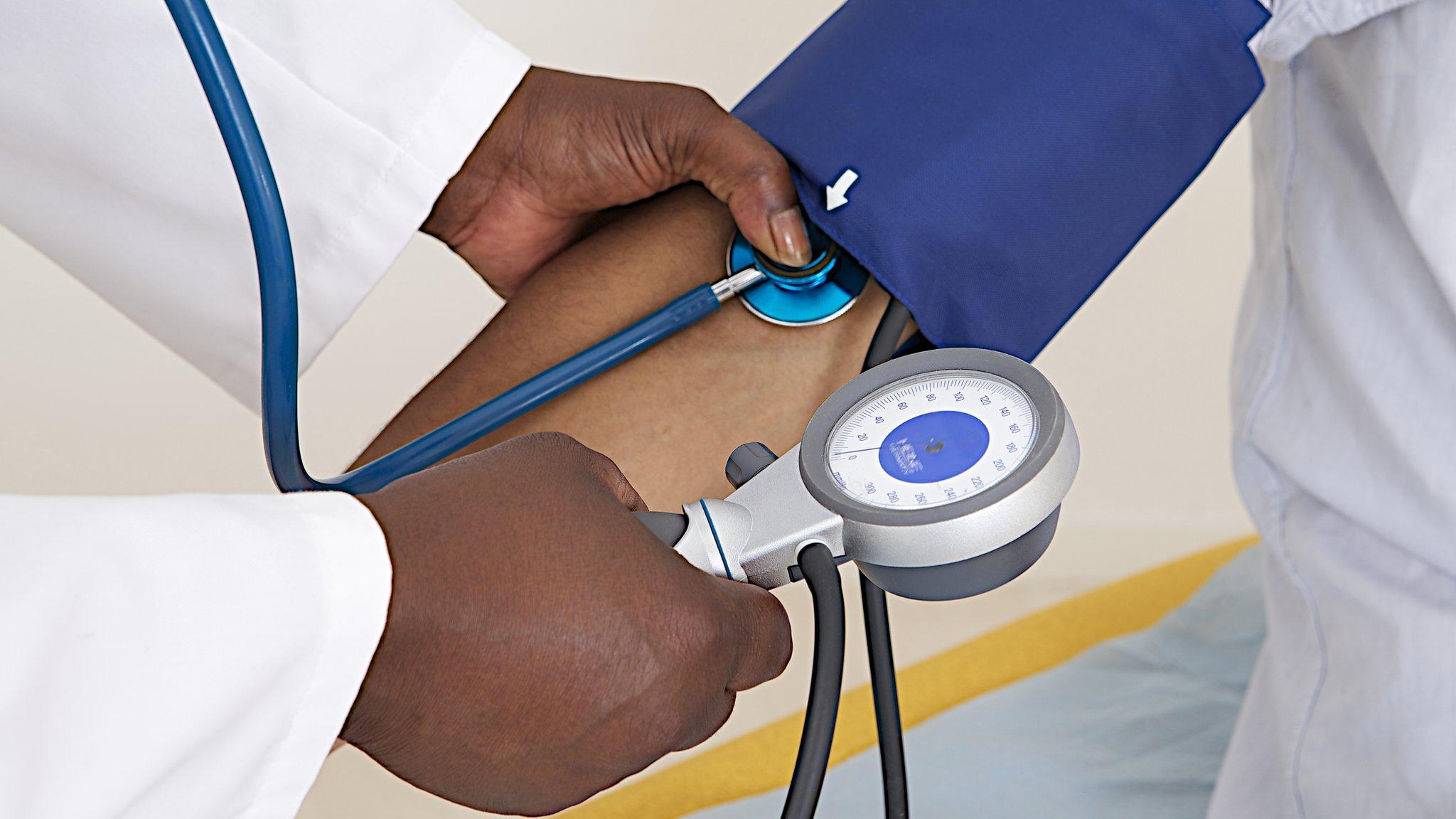High blood pressure treatment device 'promising'
- Published

The coupler could be an alternative to high blood pressure medication
A device the size of a paper clip inserted in the groin has shown promising results in lowering blood pressure, scientists say.
In a study of 83 patients, published in The Lancet, those who received the device experienced an immediate reduction in blood pressure.
But one-third also developed swelling in their leg which needed treatment.
Experts say the device could be a new way of controlling blood pressure, particularly in hard-to-treat cases.
High blood pressure affects one in three adults in the UK, with around 5% of this group suffering from resistant hypertension, which does not respond to medication.
High blood pressure is dangerous because it causes strain on the vessels carrying blood around the body.
This can cause vessels to become clogged up or to weaken, which can cause damage to the heart or brain.
High blood pressure also increases the risk of stroke, heart attack, heart failure, kidney damage and eye problems.
Pressure point
The device, called a coupler, made by ROX Medical in California which also funded the study, creates a chamber between the artery and vein in the upper thigh which appears to help lower resistance and bring blood pressure down.
Researchers at Queen Mary University of London, which led the study, tested the device on 42 patients with high blood pressure which had not responded to at least three types of drug treatment.
They compared the effects with 35 patients who were given the standard medical treatment for uncontrolled high blood pressure.
Patients were drawn from 16 centres across Europe.
The study found "significant reductions in blood pressure" in the coupler group six months after the device was implanted.
For patients in this group, there were fewer hypertensive complications and fewer hospital admissions for high blood pressure emergencies.
Patients who had the coupler inserted were also able to reduce their medication.
However, the device did have side-effects. In around 29% of patients, swelling developed in the leg in which the coupler was inserted.
This required another short procedure to insert a stent in the vein.
'Step forward'
Lead author Dr Melvin Lobo, from Queen Mary University of London, and director of Barts blood pressure clinic, said this was an easy thing to do and was probably due to turbulence caused by the device in the thigh.
But he acknowledged there was more to learn about the device.
"We need more research to explore the long-term effects of the coupler, better understand its safety and understand more about how it works within the body.
"We must find better means of treating high blood pressure as drugs do not work for everyone and the coupler is a big step forward in our search for alternative treatment."
Prof Tom MacDonald, president of the British Hypertension Society, and professor of clinical pharmacology at the University of Dundee, said the device could be "a fantastic thing for patients".
"It's another potentially great advance in the treatment of hypertension.
"It's not without its problems, but the beauty of it is you can reverse it, and it can be given to people on top of hypertension medication.
"We now need more rigorously controlled studies and a definitive trial before it can be funded for the NHS."
- Published30 May 2014

- Published5 August 2013
